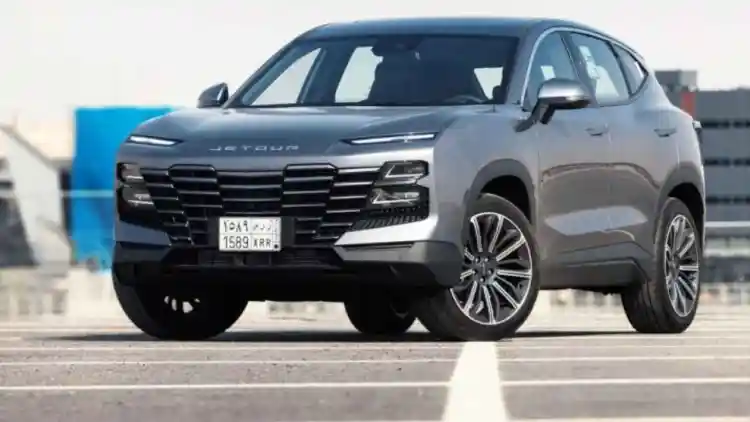- How to Choose the Best Prado Engine CC for Your Needs
- Real-World Performance Comparison
- 2025 Prado Engine Options Explained
- Maintenance Tips for Different Engine Sizes
- Future of Engine Displacement in SUVs
- FAQ
Curious about what the 2025 Toyota PradoBahrain Toyota PradoEgypt Toyota PradoKSA Toyota PradoKuwait Toyota PradoOman Toyota PradoQatar Toyota PradoUAE Toyota Prado engine cc can offer you? This guide dives deep into engine displacement options and practical tips for selecting the right Prado engine for your lifestyle. Get ready to explore performance comparisons, maintenance advice, and future trends that affect your driving experience.

How to Choose the Best Prado Engine CC for Your Needs
When deciding between different Prado engine displacements, you need to focus on your driving habits and expectations. You might wonder which engine option best suits your daily commute, weekend adventures, or heavy towing requirements. Here are three key factors to consider:
Fuel Economy vs. Power
The smaller 2.7L (2694cc) engine offers better fuel efficiency, ideal if you typically drive in urban areas. Look at how it compares to the larger 3.5L (3456cc) engine, which, although it consumes a bit more fuel, powers on rapidly when merging onto highways.
Towing and Load Capacity
Consider what you usually tow. The 3.5L engine is built to handle heavier loads, providing you with robust towing capacity if you need to transport larger items.
Terrain and Driving Conditions
Whether you navigate winding roads or mountainous regions, the engine displacement directly influences torque and handling. Increased torque from higher cc options can help you confidently tackle lifting inclines.
Real-World Performance Comparison
To help you visualize the performance differences, check out this table on engine specifications:
Displacement | Horsepower | Torque (Nm) | 0-100km/h Time |
|---|---|---|---|
2.7L 4-cyl | 163 HP | 246 | 12.4s |
3.5L V6 | 278 HP | 365 | 8.1s |
These figures illustrate that opting for a 3.5L engine can substantially decrease your acceleration time while offering extra punch for pulling heavy loads. In contrast, the 2.7L version may serve you well if your priorities lie with fuel efficiency and lower running costs.
2025 Prado Engine Options Explained
Feeling overwhelmed by choices? Let us break down the options and their benefits:
2.7L 4-Cylinder (2694cc) Features
Perfect for city driving and shorter trips, delivering a satisfying balance between performance and economy.
Enjoy lower maintenance costs with economical parts pricing—up to 23% lower on average compared to larger engine components.
Designed for the fuel-conscious driver who values both reliability and affordability.
3.5L V6 (3456cc) Advantages
Offers accelerated performance and improved responsiveness during high-speed highway driving.
Built with an enhanced cooling system especially useful in hot or challenging conditions.
Incorporates advanced noise reduction technologies to ensure a smoother and quieter driving experience.

Maintenance Tips for Different Engine Sizes
Taking care of your Prado engine is essential. Here’s a concise guide to keeping your engine in top-notch condition:
Service Intervals by Displacement
For the 2.7L engine:
Change the oil every 15,000 km to preserve engine integrity.
Replace the air filter every 30,000 km to maintain optimal fuel injection and efficiency.
For the 3.5L engine:
Opt for oil changes every 10,000 km, ensuring robust engine performance.
Schedule a transmission fluid flush at about 60,000 km for prolonged transmission life.
5-Year Cost Comparison
Understanding the financial side is just as crucial. Consider a simplified breakdown of your possible expenses over five years:
Expense Type | 2.7L Cost (AED/SAR) | 3.5L Cost (AED/SAR) |
|---|---|---|
Fuel | 22,500 | 31,800 |
Routine Maintenance | 8,200 | 11,700 |
Insurance | 6,500 | 7,800 |
This table helps illustrate that while the 3.5L engine might require a higher investment in fuel and maintenance, it rewards you with superior performance suited for more demanding conditions.
Future of Engine Displacement in SUVs
Thinking ahead, engine technology continues to evolve. The 2025 Prado models already hint at future innovations that balance performance with eco-friendly design:
Hybrid Technology Integration
The upcoming models incorporate features like:
Energy recovery systems that boost overall efficiency.
Smart cylinder deactivation, which helps in saving fuel during low-demand driving scenarios.
Advanced thermal management that lifts efficiency by improving thermal regulation in V6 engines.
Emission Standards Compliance
Both engine options are designed to comply with modern emission standards, ensuring that you drive a vehicle aligned with the latest environmental guidelines. These improvements are designed to offer an optimal balance between sustainability and raw power.
FAQ
Q1:What does engine cc really mean for my Prado’s performance?
Engine cc, or engine cubic capacity, refers to the overall size of the engine. A larger cc typically means more power and torque, which can be beneficial for heavy-duty tasks such as towing. However, it may also lead to increased fuel consumption compared to smaller engines. You need to evaluate how much power you require versus how important fuel efficiency is for your daily commute. Choosing the right engine cc directly influences your vehicle's behavior on various terrains.
Q2:Is the 3.5L engine worth the extra cost compared to the 2.7L?
The 3.5L engine is designed for drivers who frequently face heavy-load driving and high-speed conditions. You get improved acceleration and better torque that make challenging driving environments more manageable. While it may come with higher running costs, including fuel and maintenance, the benefits can easily justify the expense if your driving demands are higher. A careful look at your usage scenarios will help you decide if the added performance meets your needs.
Q3:How do the different engine options affect fuel efficiency?
Fuel efficiency is one of the primary considerations when evaluating engine displacement. The 2.7L engine typically provides better fuel economy, which makes it ideal for urban commuting and long-distance travel. In contrast, while the 3.5L engine offers more power and speed, it tends to consume more fuel, especially under heavy loads. Balancing your driving needs with the fuel economy of each option is essential for making an informed decision.
Q4:What maintenance routines are recommended for each engine type?
For the 2.7L engine, regular oil changes every 15,000 km and air filter replacements every 30,000 km are recommended to keep the engine in top condition. The 3.5L engine, given its higher performance demands, requires more frequent oil changes—every 10,000 km—and a transmission fluid flush around 60,000 km. Staying updated on service intervals and using quality parts ensures longevity and reliable performance, regardless of your engine choice.
Q5:How will future technologies impact Prado engine performance?
The next generation of Prado engines is expected to incorporate hybrid elements and smarter fuel management systems. These advancements will likely improve both overall performance and fuel efficiency. The integration of smart cylinder deactivation and energy recovery systems means that future models can adapt their power output based on driving conditions. Over time, these technologies will contribute to a more sustainable and dynamic driving experience.
This article is for reference only, please abide by the latest local laws and regulations.
Read More:
How to Sell a Car in Saudi Arabia:2025's Smart Seller's Guide
How to Drive a Car:2025’s Essential Guide for Modern Drivers
How Much Air Pressure in Car Tires? 2025’s Guide for Safe Driving
2 / 36













